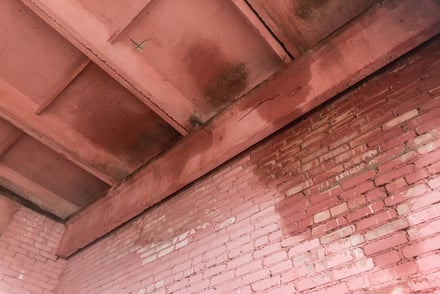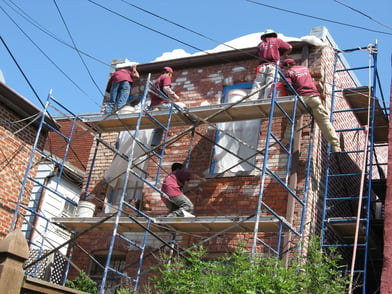Spring is here, and it happens to be the perfect time to examine the condition of your historic brick home. Melting ice and snow, along with spring rain, can give many clues to the state of your brick and mortar, both inside and outside. However, many homeowners make the mistake of believing their brick and mortar is not vulnerable to time and the elements. If your home has not been tuckpointed for several decades, it could be susceptible to damage as the mortar deteriorates. Contacting a historic brick expert for a professional evaluation and tuckpointing can save you the headache and expense of more extensive damage down the road.
Why You Need Professional Advice on Your Brick and Mortar
As a homeowner, you can take the initiative to inspect (and protect) your bricks. Pooling water near your foundation, cracks in your mortar, efflorescence on the walls, spalling, and darker, discolored areas of brick are all indications something is amiss and warrant further investigation. Inside, your interior historic brick walls, particularly the ones below grade, should be free of efflorescence, excessive dampness and leaks. There should be no water on the floor, and the walls should be straight without bulges, gaps or shifting.
While you may be able to spot obvious problems and bring in an expert to assess the damage and repair the issues, there could be many problems you don’t see. Bricks near the roofline, chimneys, and under decks or stairs can be difficult for homeowners to inspect. Additionally, many homeowners don’t have the experience to differentiate between normal wear and the fine cracks that will lead to serious damage if not quickly addressed. Booking your professional inspection now ensures you can secure a spot before their in-demand services quickly fill up as the spring and summer seasons get closer.
What is Tuckpointing?
Tuckpointing is the art of removing the old mortar and replacing it with a fresh mixture. This truly is an art form with historic brick homes, as expert craftspeople employ the traditional methods, using appropriate materials and techniques. A historic brick home cannot be tuckpointed with today’s traditional cement mortars. Their compressive strength is far greater than that of the historic brick, which will cause cracking. Instead, the craftspeople use traditional lime-based mortar mixtures that are compatible with your home, ensuring the brick remains stable and can shed moisture. Tuckpointing can be performed on both interior and exterior brick walls.
Why Your Historic Brick Home Needs Tuckpointing
With their long-standing history, it’s easy to forget that even centuries-old brick homes are not invincible. Lime-based mortar has an exceptional lifespan of up to 25 years, but that doesn’t mean it’s protecting your home as well as it should if left unchecked that long. Exposure to the elements, accidental damage and other factors can influence how long your mortar will perform its best. Having a professional brick expert inspect your home annually can prevent minor issues from becoming costly repairs.
Your home should have a full tuckpointing completed every few decades. This ensures water stays out, protecting the brick and interior walls. Water damage can be very costly to repair, and if water can get in, so can insects and other pests. Routine inspections and professional tuckpointing can help prevent this kind of damage from occurring.
Contact Renaissance Development, experts in tuckpointing historic brick homes in D.C., to arrange a complimentary consultation. Booking an inspection with an expert and hiring professional and knowledgeable craftspeople can provide peace of mind to ensure that your home will remain in top condition for many more decades to come.
Tags:
Water damage, Tuckpointing job, Spot tuckpointing, old brick, mortar, lime mortar, Home Inspection, Old Brick Home Inspection, causes of spalling, tuckpointing, historic brick home, historic brick, Historic Brick Home DC, Old Brick Home in DC, Brick walls, Old Brick Home Site Evaluation, Old Brick Home Inspection DC, Brick Repair, Historic Home, brick structural integrity, Water damage to Brick, Preventing Water Damage to Brick, Seeping Water in Brick Walls, Historic Home DC, historicbrickhome, Historic Home Renovations4/4/24 8:15 AM

